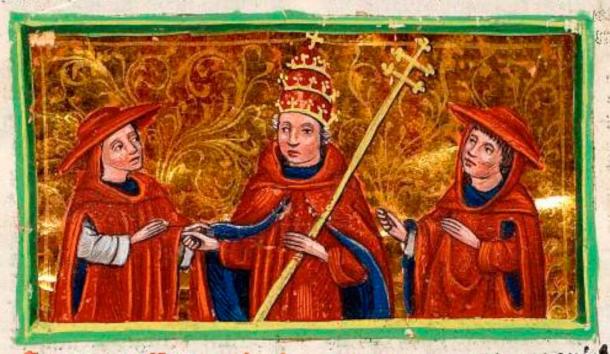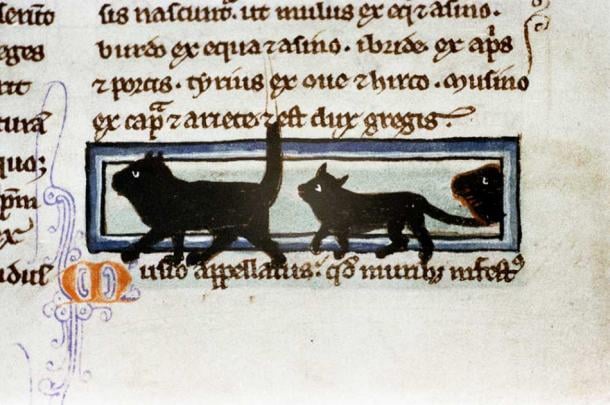
The Cat-Quisition: Pope Gregory IX Started a War on— Wait for It—Cats
Anyone with a thing against cats may get some satisfaction from a weird history “fact” circulating on the internet. Used as widespread clickbait, a frequently repeated story claims that in the 13th century Pope Gregory IX, who led the Catholic Church from 1227 to 1241 and has been remembered for initiating the Papal Inquisition against heretics, suffered from a serious case of cat contempt. Leading the charge in a full-on feline mass extermination in the name of religion, he was so successful that the population of rats went spiraling out of control and ended up causing the Black Plague which ravaged Europe between 1347 and 1351. So, is the story true?

A leaf from the "Decretals of Gregory IX," the Pope many believe led a war on cats in the 13th century. (Public domain)
This legend has it that cats, particularly black cats, are associated with witches and the Devil thanks to Pope Gregory IX and his war on cats. It appears that a medieval priest, Konrad von Marburg, was commissioned by the Archbishop of Mainz to root out heresy in Germany. Relishing the chance to let his fanaticism run free, his work produced a series of curious confessions painting a picture of heretical Devil worship which inspired the Pope to issue an official papal decree known as the Vox in Rama in June 1233. This has been described as an instruction for Catholics to slaughter cats.
However, not everyone agrees. According to Spencer McDaniel, writing in Tales of Times Forgotten, “the idea of a massive pogrom instigated by the Catholic Church that resulted in the spread of the Black Death is 100% pure fantasy.” Another case of fake news? Pretty much. First of all, the Vox in Rama papal letter was not an order by Pope Gregory IX for all Catholics to kill Devil cats. What it does do is describe bizarre heretical rituals supposedly uncovered through duress by the unscrupulous German inquisitor.

Black cats from a 13th century medieval manuscript. (Bodleian Libraries / CC-BY-NC 4.0)
While the details of these rituals are outlandish, the Vox in Rama was actually a call to arms against Luciferianism, or Devil worship, in northwestern Germany. The letter claimed heretics would take part in wild orgies, as well as strange activities which included a statue of a black cat coming to life and having its anus kissed. Smooching a giant frog was also involved. The letter claimed that “after the kiss the memory of the Catholic faith totally disappears from his heart.” Again, this was not a papal instruction to kill cats.
Besides, as McDaniel stresses, the Vox in Rama was related to the events in a very specific part of Germany and was sent to just five people, including Frederick II, the Holy Roman Emperor. Keep in mind that this was the 13th century. Most people couldn’t read and news didn’t spread like wildfire as it does today.
Top image: Did Pope Gregory IV really start a war on cats in the 13th century? Source: SlothAstronaut / Adobe Stock
By Cecilia Bogaard
















Comments
I truly hope modern day cats appreciate how fortunate and privileged they are of living in this day and age, they've no idea the nightmare their ancestors went through during those dreadful times in Europe.
Once again the words of an "expert" are expected to be presented as fact.. idk either way whether or not..however the carholics did a lot of things against God.. if that is the way God works, then clearly this persons "fantasy" might well be fact..Also evil, whatever form it may take, will often fail under the weight of its own hubris.. the universe is often self balancing.
infinitesimal waveparticles comprise what we call home the earth
manipulatable by thought ability supressed in humans since birth